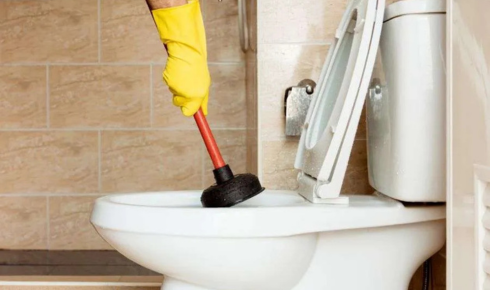A plumbing overflow can happen in an instant, but the cleanup afterward is anything but simple. Whether it starts with a sink, a toilet, or a backed-up shower, water doesn’t just stay on the surface. It spreads fast, gets under floors, behind walls, and into materials that aren’t designed to get wet. Many homeowners think they can solve the problem with towels or a mop, but real plumbing overflow cleanup takes professional tools, trained technicians, and a detailed restoration plan.
One of the biggest mistakes people make after an overflow is underestimating how far the water has traveled. Even if it looks like a small puddle on the floor, moisture can quickly work its way into subflooring, carpet padding, drywall seams, and wall cavities. Once that happens, you’re no longer dealing with surface water—you’re dealing with floor water damage and potential hidden decay. This is why water extraction & removal is the first and most important step.
When plumbing fails, the source is often more serious than what appears on the surface. Overflow from a toilet or sink may be caused by a cracked pipe, worn valve, or corroded connector. If left unchecked, it can trigger a larger issue such as a water pipe break, which releases a constant flow of water into your home. Even a small crack can cause major damage if it’s behind a wall or under a floor, and by the time water appears, the structure may already be compromised.
Overflow from a clogged drain is another frequent cause. These backups push water out of tubs, toilets, or sinks and often contain contaminated waste. That’s where cleanup requires not just drying, but full sewage removal & cleanup to ensure that bacteria and odor don’t linger. Porous materials like baseboards, insulation, and drywall can’t be safely reused after exposure to gray or black water. They need to be removed and replaced as part of the structural restoration process.
When water hits cabinetry, it’s especially damaging. Particleboard and MDF used in vanities and kitchen cabinets absorb water fast and begin to swell within hours. Once swollen, these materials lose strength and shape. No amount of drying will bring them back. In these cases, water damage cleanup has to include demolition and replacement, not just air movers and dehumidifiers.
Overflow events also frequently affect flooring. In bathrooms, water from a toilet overflow cleanup or shower & tub overflow will seep through tile grout and into the underlayment. Laminate floors may warp or buckle within a day. Vinyl may peel, and wood will discolor or cup. When this happens, drying alone isn’t enough—water damage restoration must go deeper, inspecting every layer and determining what can be saved and what must go.
One of the more overlooked risks of an overflow is the way it affects nearby walls and outlets. If water travels into the wall cavity, it may reach electrical systems, which adds serious danger. Outlets may need to be shut off, checked, and replaced. If water gets into insulation, it must be removed, dried, and replaced to prevent future odors or contamination. These are the types of issues most people miss when they handle cleanup themselves.
Sometimes, plumbing overflows are caused by failing appliances. A fridge line, dishwasher, or washing machine may leak for weeks before it’s discovered. When that happens, appliance leak cleanup becomes part of the response, especially in kitchens and laundry areas. These leaks often sit beneath cabinets or appliances and require disassembly to fully access the damage.
In colder weather, overflow incidents often happen due to frozen or burst pipes. When pipes freeze, they crack under pressure, leading to full burst pipe damage cleanup. These breaks often go unnoticed in walls or crawl spaces until water starts flowing. Once the temperature rises, the thawing pipes can release gallons of water in minutes. Cleanup in these situations needs to be fast, comprehensive, and handled with the proper tools to dry out the structure.
In some cases, an overflow may be a sign of a more widespread plumbing failure. A main water line break can affect water pressure and lead to multiple overflows across the home. This isn’t just a local issue—it’s a system-wide problem that requires inspection of all connected fixtures and pipes. Once the source is identified, broken water pipe repair can begin, followed by full restoration of affected areas.
Plumbing overflows that involve sinks are also dangerous in terms of hidden damage. A kitchen sink overflow can leak beneath the cabinet and into the wall, while a bathroom sink overflow may affect tile, cabinetry, and baseboards. These fixtures are used daily, which means ongoing exposure to moisture if the issue isn’t resolved completely.
Even your HVAC system can add to the problem. An overloaded or blocked condensate line may leak water into the same areas affected by a plumbing overflow. When this happens, hvac discharge line repair should be included in the inspection and repair scope, to make sure moisture doesn’t return in the future.
If storms or power outages contributed to the overflow, storm and wind damage cleanup may also be needed, especially when excess water enters the property through damaged exteriors or broken drainage systems. This means the job may involve both internal plumbing issues and external water damage.
At Property Craft, we understand that a plumbing overflow is never just a puddle. It’s a signal that water is moving in places it shouldn’t. We respond with urgency, precision, and the right tools to make sure your home is dry, clean, and safe. From the first moment of flooding to the final stage of restoration, we focus on getting everything back to the way it should be, without cutting corners or skipping steps.
Whether you’re dealing with an overflow from a clogged toilet or a leaking fridge, don’t trust towels to do the job. Call Property Craft for thorough cleanup and reliable restoration that protects your home long after the water is gone.

